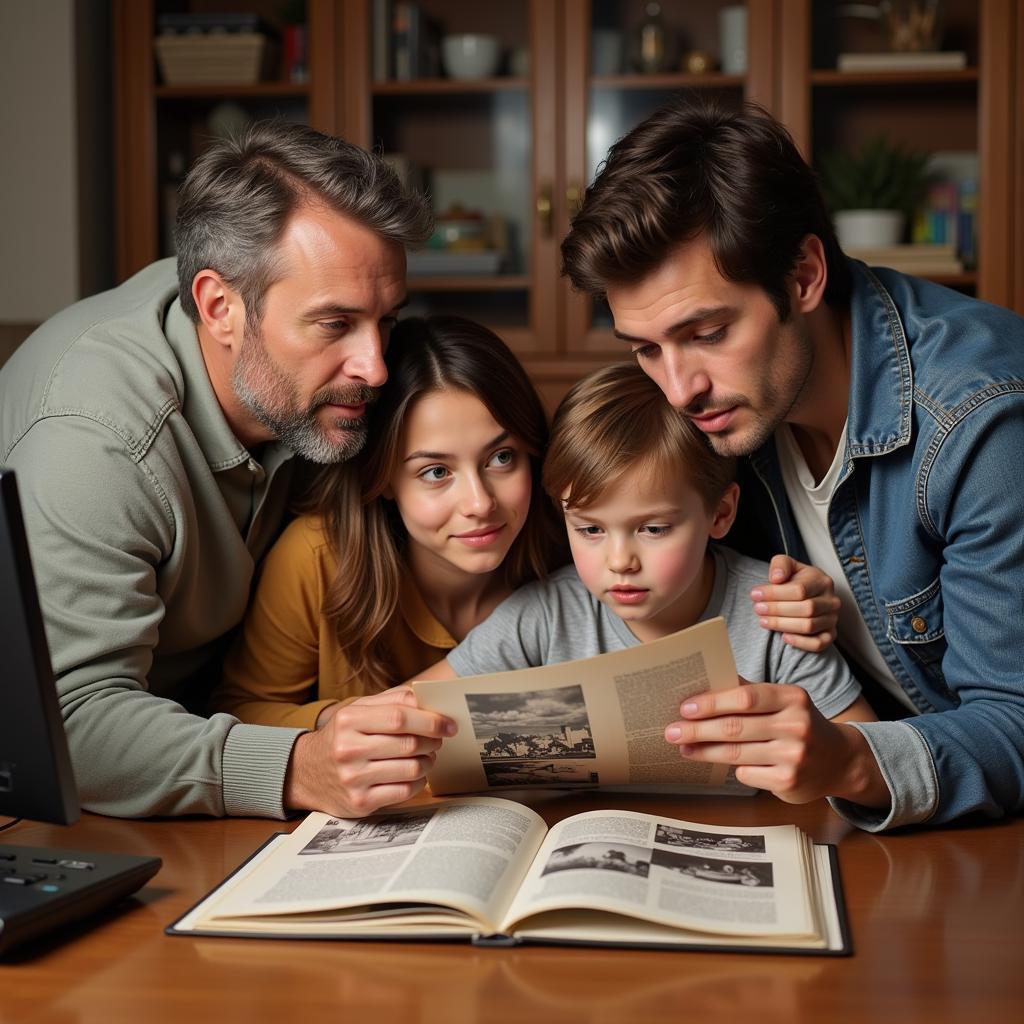The information society presents a paradox: we’re more connected than ever, yet often feel disconnected from tangible experiences. The digital world, for all its advantages, sometimes lacks the tactile and personal touch of physical interactions. This is where “information society face-to-face clipping magazine scans” comes into play, bridging the gap between digital and physical, past and present. We’ll explore how the digitization of clippings from magazines, specifically scans, can foster personal connections and deeper understanding within our increasingly digital world.
Connecting Through Clipping Magazine Scans in the Information Society
The prevalence of digital information has undoubtedly transformed how we consume and interact with media. Yet, the tangible nature of physical objects, like magazine clippings, holds a unique appeal. Digitizing these clippings through scanning allows us to preserve them, share them, and even recontextualize them in the digital age. This blend of physical and digital creates a powerful connection, reminding us of the shared human experience that underlies the information society.
Imagine discovering a tattered magazine clipping from decades ago, a treasured recipe passed down through generations, or a poignant article that resonated deeply with your grandparents. Scanning these clippings not only preserves them for posterity but also allows you to share these personal pieces of history with family and friends across the globe. This act of sharing fosters connection and understanding, bridging geographical distances and generational gaps.
What drives this desire to preserve and share these seemingly insignificant scraps of paper? It’s the emotional resonance they carry, the tangible link to the past, and the stories they represent. In a world saturated with fleeting digital content, these scanned clippings offer a sense of permanence and personal connection.
 Connecting Through Clipped Magazine Scans
Connecting Through Clipped Magazine Scans
The Power of Tangible Memories in a Digital World: Information Society Face-to-Face
The act of physically clipping an article from a magazine signifies its importance to the individual. It represents a conscious decision to preserve a piece of information, a moment in time, or a personal reflection. This intentional act adds a layer of meaning that is often lost in the ephemeral nature of digital content. Information society face-to-face clipping magazine scans allows us to recapture that sense of intentionality, bridging the gap between the digital and the physical.
By scanning these clippings, we’re not just preserving the information; we’re preserving the emotional context. The texture of the paper, the faded ink, even the jagged edges of the clipping – these details contribute to the overall experience and deepen the connection to the past.
“In a world of fleeting digital information, these tangible pieces of the past hold a special significance,” says Dr. Amelia Hernandez, a cultural anthropologist at the University of California, Berkeley. “They represent a tangible link to our personal histories and shared cultural heritage.”
Building Bridges Across Generations with Information Society Face-to-Face Clipping Magazine Scans
Sharing scanned magazine clippings can spark intergenerational conversations and foster deeper understanding between family members. These clippings can serve as a starting point for discussions about family history, shared values, and the evolution of cultural norms.
For example, a scanned clipping of a fashion trend from the 1960s could lead to a conversation about the social and political climate of that era. A recipe clipped from a vintage magazine could be recreated in the kitchen, connecting generations through a shared culinary experience.
“These scanned clippings offer a unique opportunity to bridge generational divides and foster a sense of shared history,” adds Dr. David Lee, a sociologist specializing in family dynamics at Columbia University. “They provide a tangible starting point for meaningful conversations and deeper understanding.”
Preserving History: Archiving Clipping Magazine Scans in the Information Society
Digitizing magazine clippings through scanning ensures their preservation for future generations. These scans can be stored securely in digital archives, protected from the ravages of time and physical deterioration. This digital preservation also allows for easy access and sharing, ensuring that these valuable pieces of history are readily available to anyone, anywhere.
Information society face-to-face clipping magazine scans not only preserves personal history but also contributes to a larger collective archive of cultural memory. These clippings can offer valuable insights into past trends, social norms, and historical events, providing a richer understanding of the past.
Conclusion: The Enduring Power of Information Society Face-to-Face Clipping Magazine Scans
In the information society, the act of scanning and sharing magazine clippings offers a unique way to bridge the gap between the digital and the physical, the past and the present. These scanned clippings become more than just images; they become tangible representations of personal memories, shared histories, and cultural heritage. Information society face-to-face clipping magazine scans fosters connection, understanding, and a deeper appreciation for the enduring power of tangible artifacts in a digital world.
FAQ
- What is the best way to scan magazine clippings?
- How can I organize my digital archive of scanned clippings?
- Can I share my scanned clippings online?
- What are some creative ways to use scanned magazine clippings?
- How can I ensure the long-term preservation of my digital scans?
- What are the copyright implications of scanning and sharing magazine clippings?
- Are there any resources available for digitizing large collections of clippings?
More Resources
- Exploring the History of Magazines
- The Impact of Digital Technology on Archiving
- Preserving Family History Through Digital Media
If you need assistance, please contact us at Phone Number: 02043854663, Email: [email protected] Or visit our address: Khu 34, Bac Giang, 260000, Vietnam. We have a 24/7 customer service team.